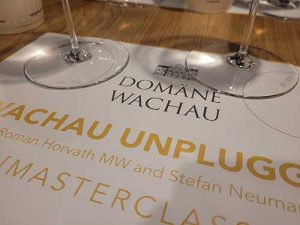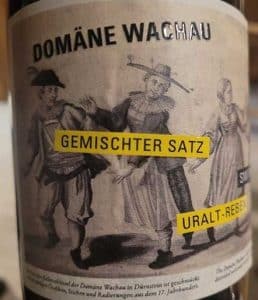
Austrian wines, both whites and reds, have for many years been beloved of wine geeks and sommelier, but remained less familiar to many in the trade and wider market until more recently.
After working with Austrian producers for many years, it is a wine region close to my heart for two reasons:
Not to mention what, lovely friendly and welcoming people they are, a joy to know and work with!
It is a source of delight to me that the many more importers and retailers now have an interest in buying and stocking Austrian wines. Richards Walford was one of the importing pioneers for bringing these wines in to the UK. As we had ‘got in’, early on, it meant we had the good fortune to work with some of the best producers; Emmerick Knoll, FX Pichler and Nikolaihof from the Wachau, as well other ‘best in class’ for their respective regions Bründlmayer (Kamptal), Uwe Schiefer (Eisenberg) and Josef Ehmoser (Wagram).
Austria has a strong domestic market for its wines, which hoovers up a lot of the production from the just under 45K hectares. It was surprising to note, this equates to roughly a tiny 1% of total global production. This is very similar, in fact only c.4K more than total area under vine of the more internationally visible New Zealand.
It has been a long process increasing distribution in the UK, but the Austrian Wine Marketing Board have proudly been able to announce annual increases in exports in the last few years.
For anyone wanting to have a ‘full on’, ‘deep dive’ in to Austria, there is certainly no shortage of information available to you. Austrians are usually brilliantly organised and take all aspects of their wine tastings and wine information very seriously. The Austrian Wine Marketing Board has an amazing, in depth approach to all its international activities. Their website is an absolute treasure trove of information, which allows you to drill down as deep as you like on each aspect of information. Some of the detail on the DAC classification system and geology especially can be bit intense, but there is no risk of anyone coming away from their website under informed!
‘’Wachau Souterrain – The Geology of the Wachau and its Wines’ was a seminar I helped organise on behalf of the Vinea Wachau. It was one of my last events before leaving Fields, Morris & Verdin and was testament to the Austrian ‘obsession’ with geology. It did however, serve as a fascinating approach to explaining the distinctive terroirs for the numerous single vineyard sites along the Danube and was greatly appreciated by those lucky enough to attend.

Domäne Wachau is a prime example of the best, some co-operative models can offer. Their highly efficient operation combines working with both quantity and quality. Traditionally vineyards in the Wachau remain family owned and their 250 growers average only 1-2ha. The total area under vine in the Wachau, just below 1300ha has numerous single vineyard sites which spread over the flatter Danube valley floor and the many steep terraces.
Domäne Wachau provided some excellent Grüner Veltliners and Rieslings to taste to illustrate the region, including some lovely wines from the famous Achleiten vineyard. Having visited the Wachau, I had gained a better sense of how small the region is, with closely knit villages and vineyards. This gave a good sense of the historical and cultural influences as to why they have remained under family ownership. I hadn’t thought as much about how this also would factor in to the age of many of the vineyards. Roman Horvath MW director of Domäne Wachau, described how this history has structured the region, which has meant many vines planted in 60s and earlier have been retained. New vines are often grafted on to the original, old roots. They also produced a few other lovely curiosities including a Riesling aged in Amphora and a 2021 Gemischter Satz Smaragd Uralt-Reben, a ‘field blend’ produced from vines planted in 1920s.
‘Field blend’ is a style of wine vinified from a vineyard with mixed plantings of different grape varieties. It is a term that has a more familiar association with Portugal and particularly the Douro. It is also a wine style that has come out of South Africa from winemakers seeking to work with and preserve the old vine vineyard plantings. ‘Gemischter Satz’ is fab sounding word, but adding in ‘field blend’ with an explanation, helps to improve any wine (tech) information sheet. It helps to provide ‘context’ to help describe the origins and reasons for the blend of grapes.
This tasting was a useful reminder of some distinctive elements of Austrian wine. The Wachau has its own unique classification system for wine styles, established by the Vinea Wachau in 1983. The terms can take a little getting your head round; Steinfeder, Federspiel and Smaragd – their definitions have evolved to provide an indication and definition of style, rather than purely quality, based on ripeness. From 2020 vintage the Wachau wines are also covered by the still evolving Austrian wine laws and DAC system, which also provides classifications by region, grape and quality levels.
It is important to utilise characteristics specific to a region, to highlight as benchmark information. This is in anticipation that this information may be less familiar to many in trade. It is not a good idea to make assumptions about your trade clients’ knowledge of the basics, relating to the wines you are introducing or supporting in the market. Benchmark terms and context provide useful reference points, to better illustrate what you need to convey.
Domäne Wachau’s ‘Nerd Notes’ are a great example of the Austrian approach to #wineinformation – never knowingly underinformed! I just discovered this wonderful section on their website, which goes in to much greater depth and detail on a whole range of subjects relating to their wines and region. All the information is provided in both English and Austrian, complete with downloads – wine geek heaven!

Privacy Policy | Use of Cookies | Terms of Use © 2024. All Rights Reserved.